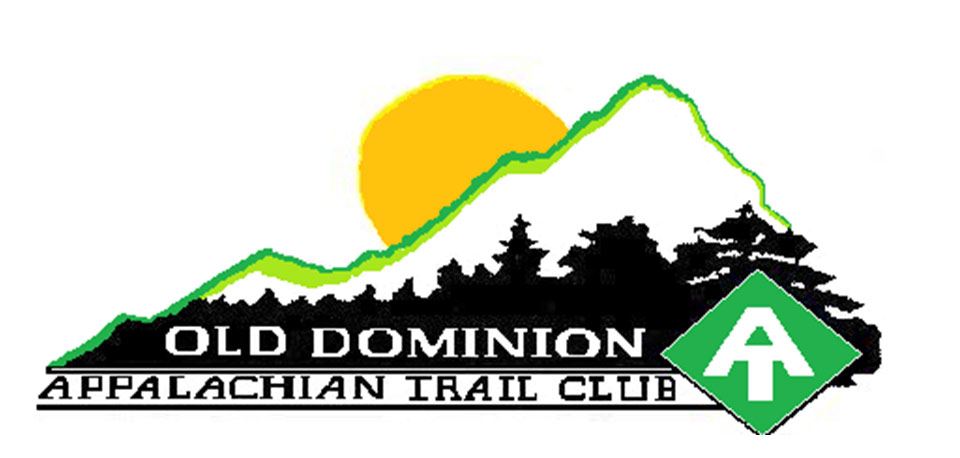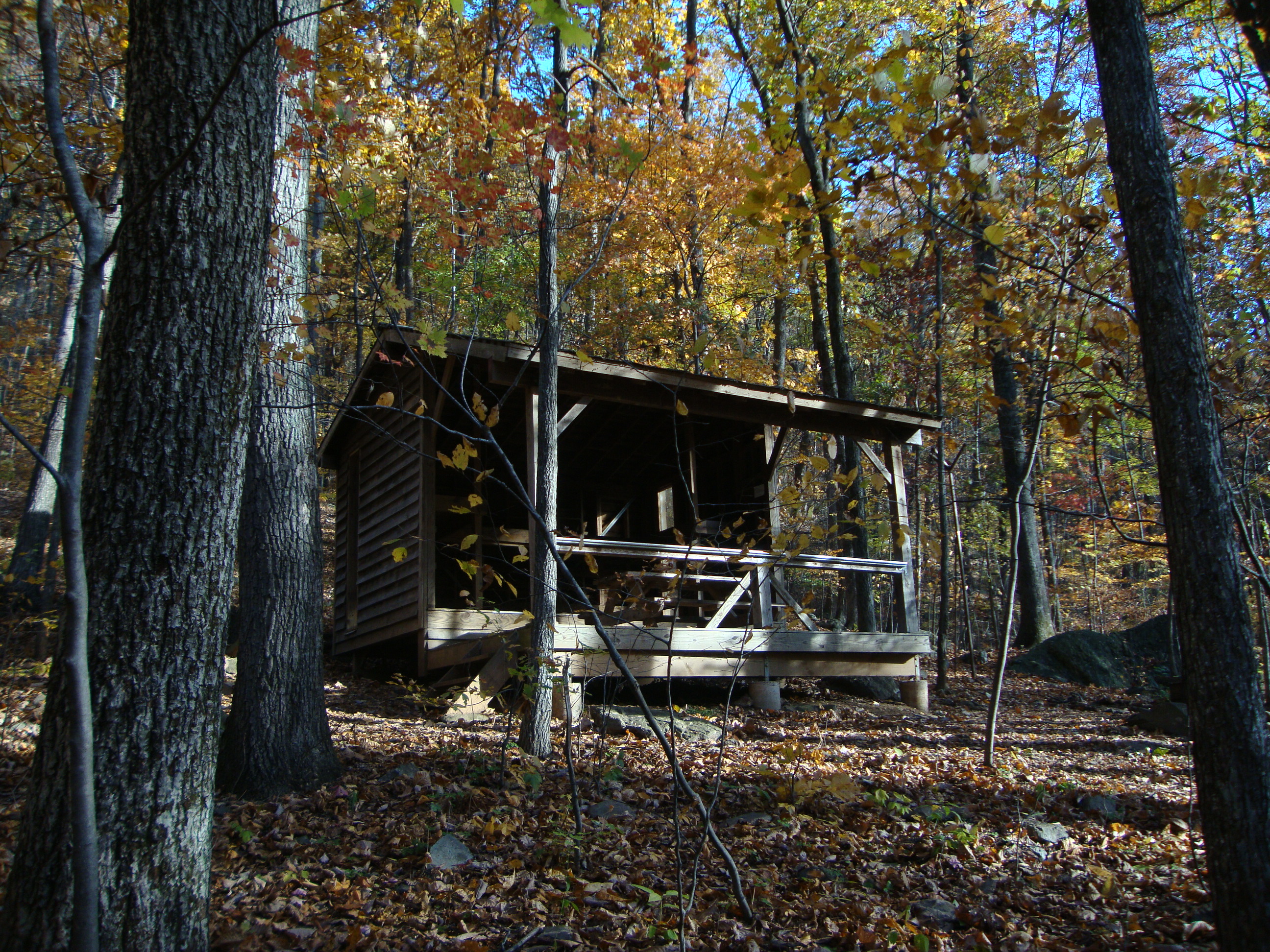Trail Maintenance Overview
The Old Dominion Appalachian Trail Club (ODATC) is one of 31 trail clubs that, under the umbrella of the Appalachian Trail Conservancy organization, shares the responsibility of maintaining the 2,181 mile Appalachian Trail as it winds its way between Springer Mountain, Georgia, and Mt. Katahdin, Maine. ODATC is specifically responsible for maintaining the 19.1 miles between Rockfish Gap and Reed's Gap in the Central Virginia Section. This is the part of the trail that lies immediately south of Shenandoah National Park. ODATC also maintains the 0.9 mile blue-blazed Jack Albright Trail.
If you are interested in participating in our trail maintenance activities, see the contact information below.
CONTACTS
Trail Maintenance Co-Supervisors:
Dave Wilcox and Craig Hardy
Paul C. Wolfe Memorial Shelter
If you are interested in more information regarding ODATC trail maintenance efforts, please view our blog at http://rockfishtoreeds.blogspot.com/.
Trail Maintenance Work Trips
Club trail maintenance work trips are scheduled on the 3rd Saturday of each month (except for December, January, and February) and club member participation is encouraged and necessary for ODATC to fulfill its trail maintenance responsibilities. These work trips are for assisting the section maintainers with work that needs to be done on their sections. This work could be routine maintenance such as weed control (especially during the May - August weed season), cleaning out water bars, and trail debris removal. Other work that is too complex, difficult or poses a safety issue for a section maintainer to handle on their own is also performed during club work trips when additional help is available.
A Word About Sawyers
Without our sawyers, all activities on the Appalachian Trail would be severely impaired. The club's sawyers are generally busy on work trips clearing trees and limbs that are too large for the section maintainers to clear on their own The use of chain saws is restricted to formally certified Sawyers only. If you are interested in becoming a sawyer, please see (here).
When you come out for a work trip, please dress for the weather, wearing long pants, boots, or, sturdy shoes and bring work gloves. You should also have a sack lunch, snacks and plenty to drink. Most folks carry a small pack for these items. Suitable clothing is essential since we may go off trail, which means briars and poison ivy. Bug spray (ticks, no-see-ums, gnats, etc.) and of course suntan lotion are a good idea. Additional tips on what to bring can be found on the Activities and Events page in the "List of Items to Bring on a Hike". A change of clean clothes is optional for after the work trip.
Although many club volunteers work on ODATC's 19.1 miles on club work trips and at other times, the club's AT responsibility has been broken into 12 sections (see below) and a specific maintainer (or maintainers) has been assigned to each section and to the Jack Albright Trail. Assigning specific trail maintainers assures that all parts of the trail receive individual attention and maintenance at regular intervals and facilitates promptly identifying issues/problems that may need attention by a work crew
ODATC Section Descriptions
Rockfish Gap is the northern end of our section
Reid’s Gap (Rt 664) is the southern end of our section
|
From Rockfish Gap |
|
From Reids’ Gap |
|
0 |
(Section #1 - 1.8 miles] |
19.1 |
|
0.9 |
Cross wet area with several small streams |
18.2 |
|
1.8 |
Cross stream (Naughty Girl Creek) [Section #2 - 1.7 miles] |
17.3 |
|
1.9 |
Rock steps & switchback |
17.2 |
|
3 |
Cross wet & rocky area |
16.1 |
|
3.3 |
Remnants of Mayo cabin dating to early 1900's |
15.8 |
|
3.5 |
Long Rock [Section #3 - 1.4 miles] |
15.6 |
|
4 |
Old settlement area – rock piles. Lowe family cemetery |
15.1 |
|
4.9 |
Paul C. Wolfe Shelter north of Mill Creek [Section #4 - 1.6 miles] |
14.2 |
|
5.6 |
Cleared overlook - views of SNP & Rockfish Valley |
13.5 |
|
6.4 |
Old roadbed & Jack Albright Trail to Humpback Rocks parking area |
12.7 |
|
6.5 |
Blue-blaze trail 1.0 miles to Humpback Parking (add to Section #4) |
12.6 |
|
6.5 |
Blue-blaze trail to Humpback Rocks Parking [Section #5 - 1.1 miles] |
12.6 |
|
6.8 |
Side trail 0.2 mile to Glass Hollow Overlook |
12.3 |
|
7.6 |
Howardsville Turnpike [Section #6 - 1.4 miles] |
11.5 |
|
7.6 |
(0.2 to HB Gap parking northwest/uphill - add to Section #6) |
11.5 |
|
8.1 |
Howardsville Turnpike intersects – leave roadbed, ascend s'backs |
11 |
|
9 |
Bear Spring [Section #7 - 1.5 miles] |
10.1 |
|
9.8 |
Spring (unreliable) on east side of trail) |
9.3 |
|
10.3 |
Rock staircase |
8.8 |
|
10.5 |
Blue-blaze trail to Humpback Rocks [Section #8a – 1.0 miles] |
8.6 |
|
10.6 |
Saddle in flat area (intersect forest road from HB Picnic area) |
8.5 |
|
10.9 |
Pass through rock wall (Hole-in-the-Wall) |
8.2 |
|
11 |
Numerous rock steps at switchback (Rock Step Project) |
8.1 |
|
11.5 |
Rock outcrop near N summit of Humpback Mtn [Section #8b – 1.6 miles] |
7.6 |
|
12.5 |
Top of cliff – views of Wintergreen Resort (Battery Cliffs) |
6.6 |
|
13.1 |
Blue-blaze trail to Humpback Picnic area (0.3 mile) [Section #9 - 1.2 miles] |
6 |
|
13.4 |
Rock pile (blue-blaze) – AT is white & goes around |
5.7 |
|
14 |
Laurel Springs |
5.1 |
|
14.1 |
Sharp turn west (side trail to Wintergreen straight ahead) 0.7 relo |
5 |
|
14.3 |
Dripping Rock Parking (MP 9.6) [Section #10 - 2.0 miles] |
4.8 |
|
14.8 |
Cedar Cliffs |
4.3 |
|
15.6 |
Side trail 400 feet to overlook (Little Raven's Roost) |
3.5 |
|
15.8 |
Rock Steps |
3.3 |
|
16.3 |
Cross stream (Cripple Creek) [Section #11 - 2.3 miles] |
2.8 |
|
17.8 |
Rock Steps |
1.3 |
|
18.2 |
Rocky area -slippery when wet |
0.9 |
|
18.6 |
Three Ridges Overlook (MP 13.1) cross BRP [Section #12 - 0.5 miles] |
0.5 |
|
18.8 |
Wooded crest of hill |
0.3 |
|
19.1 |
Reid's Gap – southern end of section |
0 |
|
Albright Loop |
Maintainer Duties & Responsibilities
Maintainers should visit and/or work their sections about four times a year; however, more frequent trips may be necessary. Trip frequency is a maintainer judgment issue based on their knowledge of the various factors that affect the particular section for which they are responsible. A trail maintainer is responsible for:
1. Keeping the footpath clear by:
-
- Removing fallen limbs and trees, i.e., 'blowdowns'.
- Removing encroaching vegetation from the treadway.
- Removing fallen limbs and trees, i.e., 'blowdowns'.
-
- Overhead and side branches should be clipped and weeds cut to maintain a trail corridor that is four feet wide by eight feet high.
2. Keeping existing water bars and other erosion control structures in good repair and clear of leaves and dirt so they work properly to divert water off the trail. Assessing trail conditions and installing or reporting the need for additional erosion control structures.
3. Removing litter/trash and all unnatural materials from the trail and packing it out.
4. Assuring that the trail treads on sidehills are eighteen to twenty-four inches wide, slightly outsloping, and not narrowed by soil collapsing from the uphill side.
5. Maintaining painted blazes in good condition. Blazes should be two inches wide by six inches high in size and are placed both north and southbound on the trail (not on the same tree).
6. Frequently checking the Paul Wolfe Shelter and privy (the shelter has separate, specific maintainers).
- Removing any litter, literature, etc. left in the shelter or surrounding areas.
- Sweeping out the shelter and privy and removing wasp/mouse nests.
- Clearing the fire ring of cans, tinfoil, and any other items that will not burn.
- Checking the shelter and privy for structural damage, leaks, etc.
7. Keeping any springs along the trail clean of leaves, dirt and debris.
8. Monitoring the trail for shortcutting of switchbacks, going around rock steps, or any other method of bypassing the trail tread and using fallen limbs, branches or rocks to keep hikers on the treadway. Abandoned trail segments should also be disguised or blocked off with rocks or tree debris.
9. Monitoring any signage for condition issues.
10. Clearing scenic overlooks and viewpoints of encroaching trees to preserve a better view for hikers.

